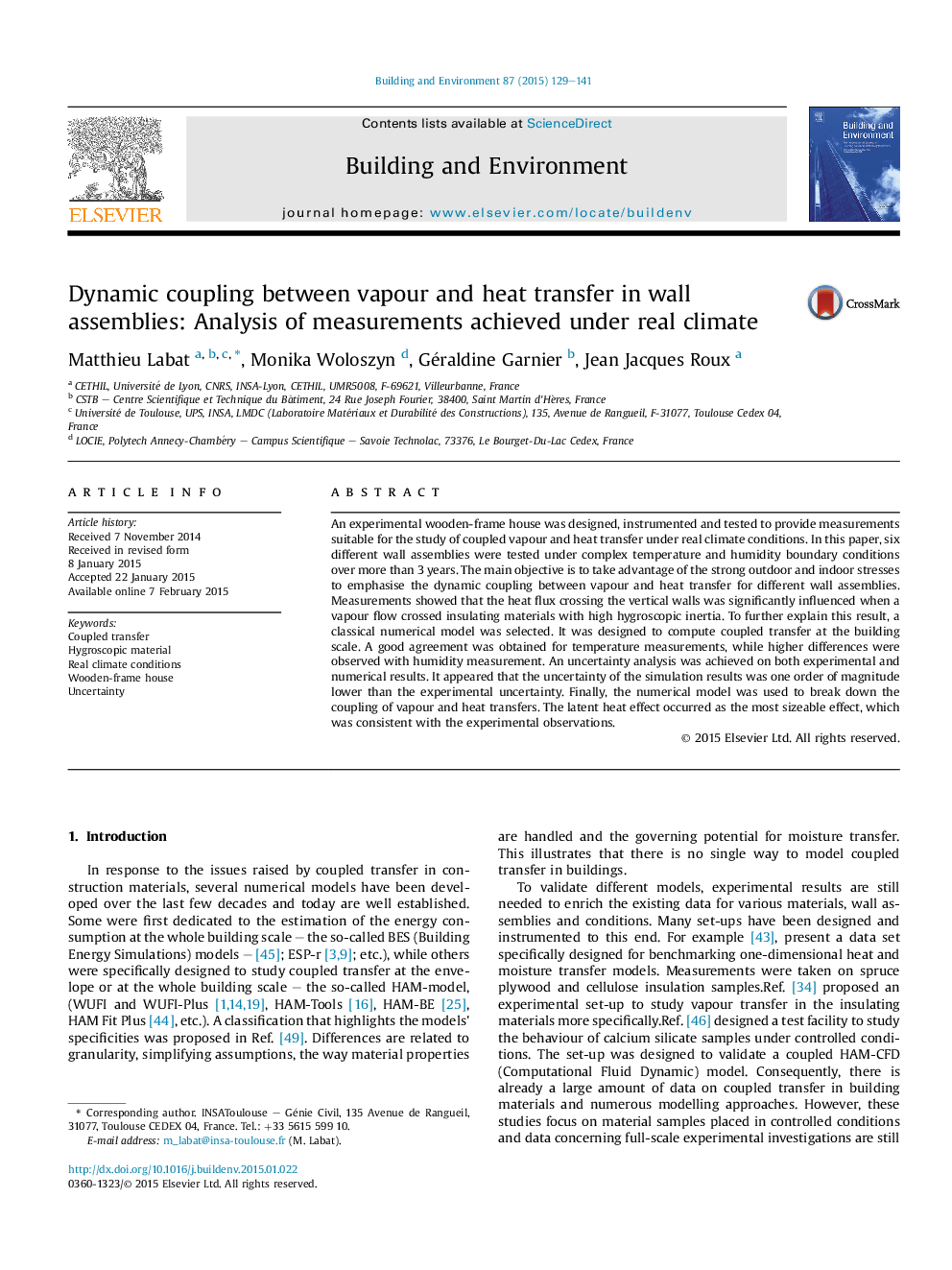| کد مقاله | کد نشریه | سال انتشار | مقاله انگلیسی | نسخه تمام متن |
|---|---|---|---|---|
| 248026 | 502540 | 2015 | 13 صفحه PDF | دانلود رایگان |
• An experimental wooden-frame house was exposed to the natural climate of Grenoble, France.
• Results collected for six different wall assemblies are compared from an experimental point of view.
• Coupled transfers were simulated in the vertical walls and were in good agreement with temperature and heat flux measurement.
• Higher differences were observed with moisture at high temperature and humidity levels.
• The latent heat effect of water adsorption appeared to be sizeable at the building scale.
An experimental wooden-frame house was designed, instrumented and tested to provide measurements suitable for the study of coupled vapour and heat transfer under real climate conditions. In this paper, six different wall assemblies were tested under complex temperature and humidity boundary conditions over more than 3 years. The main objective is to take advantage of the strong outdoor and indoor stresses to emphasise the dynamic coupling between vapour and heat transfer for different wall assemblies. Measurements showed that the heat flux crossing the vertical walls was significantly influenced when a vapour flow crossed insulating materials with high hygroscopic inertia. To further explain this result, a classical numerical model was selected. It was designed to compute coupled transfer at the building scale. A good agreement was obtained for temperature measurements, while higher differences were observed with humidity measurement. An uncertainty analysis was achieved on both experimental and numerical results. It appeared that the uncertainty of the simulation results was one order of magnitude lower than the experimental uncertainty. Finally, the numerical model was used to break down the coupling of vapour and heat transfers. The latent heat effect occurred as the most sizeable effect, which was consistent with the experimental observations.
Journal: Building and Environment - Volume 87, May 2015, Pages 129–141
